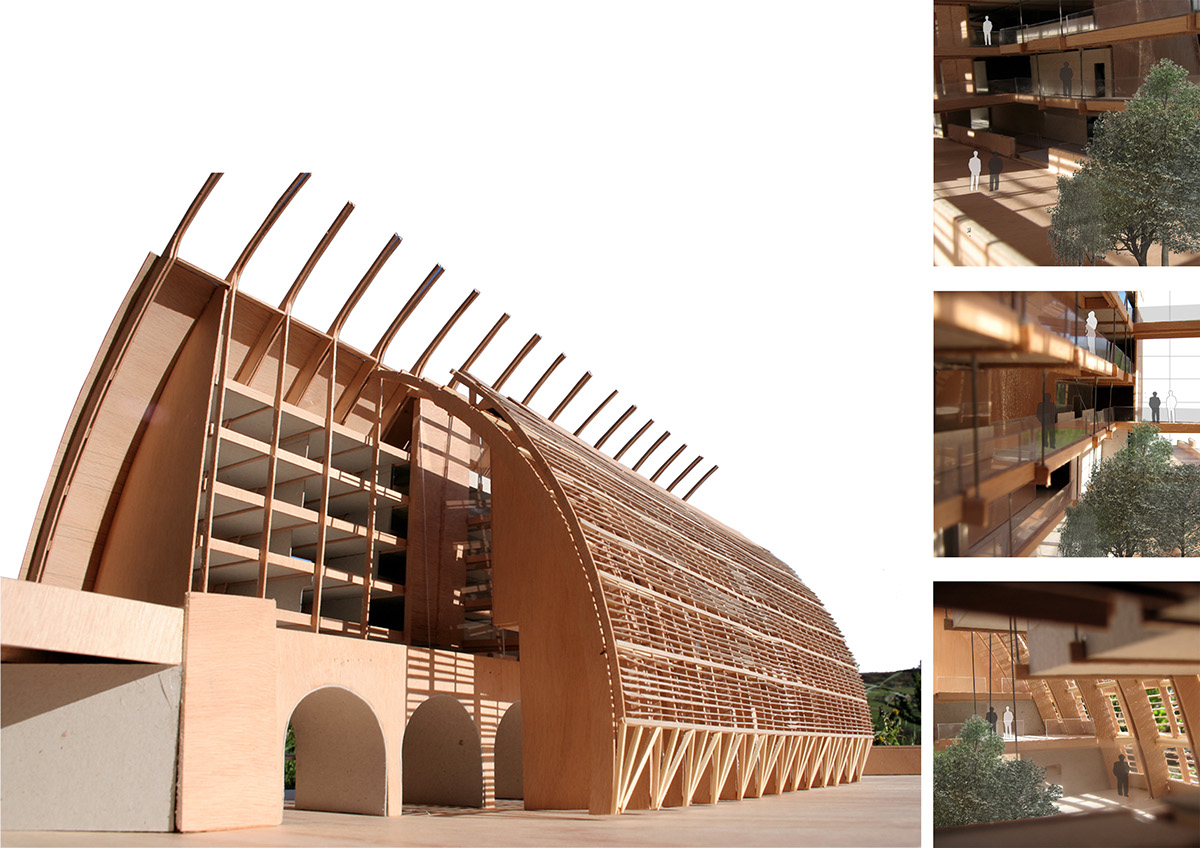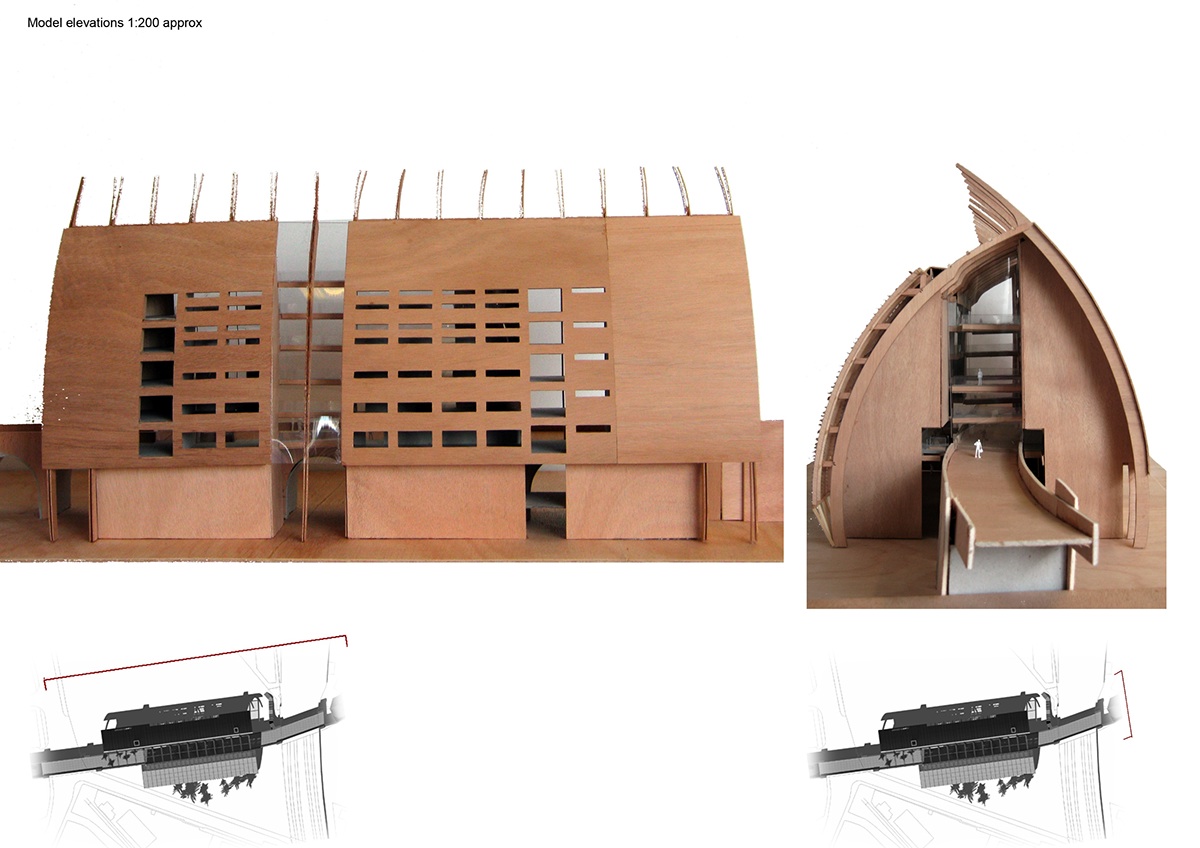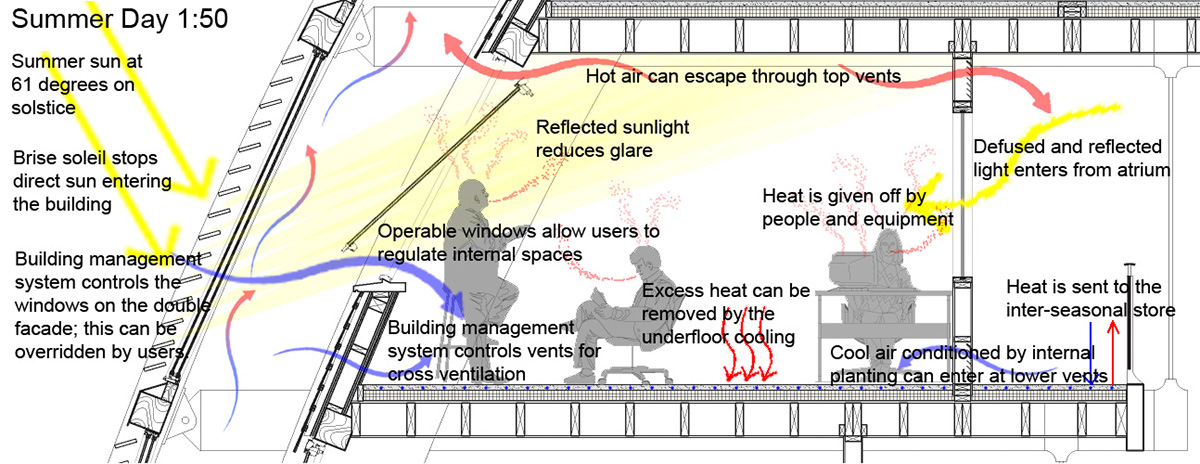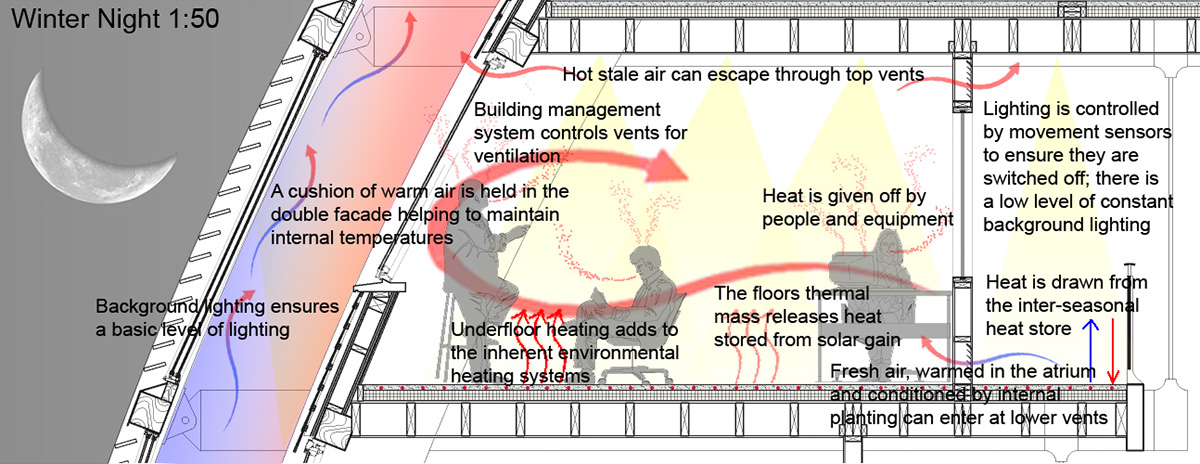Bioremediation research facility and Seed bank.
March thesis project. Leeds Metropolitan University.
Narrative to describe the process and analytical thinking behind the project

3D render with Vector Works and Render Works
Leeds has a history of industrial development that can be traced back to the start of the industrial revolution. Many of these developments have left a legacy of contamination that corrupt the composition of the soil and ground water making them toxic to plants, animals and humans.
As the industries grew, the population rose and inhabited the many small hamlets around Leeds. The industries moved along their source of power and cooling in the form of waterways, and filled in the spaces between the hamlets to conglomerate them into what is now Leeds.
The industries have now moved on but they have left tracts of derelict land. This combined with new infrastructure has resulted in isolating the outlying areas of population, which has meant that the outlying suburbs have declined in popularity and investment as a result, this is especially the case in South Leeds where most of the industrial development occurred.
While the Soil and water are contaminated development is unlikely, especially in a time of economic crisis. However some plants and organisms have the ability to remediate the contamination through a number of processes, which is known as bioremediation.
The proposal looks at using the process of in-situ bioremediation to cleanse the soil and ground water, and to reconnect the isolated communities through a number of linear parks. These will follow the main areas of contamination, which have occurred along the water sources as a result of the industrial requirement for water. The streams and rivers will be opened up and planted with trees and flowers creating green arteries for the city.
As a result of the green arteries, flood plains can be reinstated as there is little risk to properties, thus alleviating the risk of flooding within more developed areas. Over a period of time, depending on the type and level of contamination, the areas that are not at risk of flooding can be redeveloped within the green framework.
In order for this process to happen it is important to understand the science behind Bioremediation, and where possible help it along. As a reasonably new science there is a loot to be learned.
For this, a new centre of plant science looking specifically at Bioremediation is required. It will look at the processes and enhance the natural ability through hybridization. For hybridization it is important to have as diverse a plant resource as possible. However due to climate change, many of the indigenous plants will have to move North or up in altitude to escape changing climatic conditions. In many cases plants are unable to achieve this and so become extinct. To combat this loss of DNA, a seed bank will store the genetic code of plants.
This source of indigenous seeds will be available for many of the conservation bodies trying to maintain and enhance our areas of natural beauty thus keeping the sources for the seeds thriving.
As the industries grew, the population rose and inhabited the many small hamlets around Leeds. The industries moved along their source of power and cooling in the form of waterways, and filled in the spaces between the hamlets to conglomerate them into what is now Leeds.
The industries have now moved on but they have left tracts of derelict land. This combined with new infrastructure has resulted in isolating the outlying areas of population, which has meant that the outlying suburbs have declined in popularity and investment as a result, this is especially the case in South Leeds where most of the industrial development occurred.
While the Soil and water are contaminated development is unlikely, especially in a time of economic crisis. However some plants and organisms have the ability to remediate the contamination through a number of processes, which is known as bioremediation.
The proposal looks at using the process of in-situ bioremediation to cleanse the soil and ground water, and to reconnect the isolated communities through a number of linear parks. These will follow the main areas of contamination, which have occurred along the water sources as a result of the industrial requirement for water. The streams and rivers will be opened up and planted with trees and flowers creating green arteries for the city.
As a result of the green arteries, flood plains can be reinstated as there is little risk to properties, thus alleviating the risk of flooding within more developed areas. Over a period of time, depending on the type and level of contamination, the areas that are not at risk of flooding can be redeveloped within the green framework.
In order for this process to happen it is important to understand the science behind Bioremediation, and where possible help it along. As a reasonably new science there is a loot to be learned.
For this, a new centre of plant science looking specifically at Bioremediation is required. It will look at the processes and enhance the natural ability through hybridization. For hybridization it is important to have as diverse a plant resource as possible. However due to climate change, many of the indigenous plants will have to move North or up in altitude to escape changing climatic conditions. In many cases plants are unable to achieve this and so become extinct. To combat this loss of DNA, a seed bank will store the genetic code of plants.
This source of indigenous seeds will be available for many of the conservation bodies trying to maintain and enhance our areas of natural beauty thus keeping the sources for the seeds thriving.

Section.

Area plan.

Floor plans, 1 to 3

Floor plans, 4 to 8

Details

Model photos and images










Energy and evironmental considerations.








Construction process

Internal desires vs external forces.







